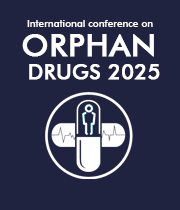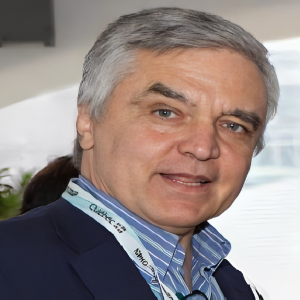Title : Personalized and Precision Medicine (PPM) as a unique healthcare model to secure the human healthcare and biosafety among childhood
Abstract:
A new systems approach to diseased states and wellness result in a new branch in the healthcare services, namely, Personalized and Precision Medicine (PPM). Each decision-maker values the impact of their decision to use PPM on their own budget and well-being, which may not necessarily be optimal for society as a whole. It would be extremely useful to integrate data harvesting from different databanks for applications to thus provide more tailored measures for the patients resulting in improved patient outcomes, reduced adverse events, and more cost effective use of the latest health care resources including diagnostic (companion ones), preventive and therapeutic (targeted molecular and cellular) etc.
PPM and related areas are those of the most promising technologies for improving health care and health outcomes. The latter offers many advantages for PPM applications, including a size that matches the scale of the molecular substrates of PPM, an increased sensitivity in detecting and binding with target molecules, and flexibility in the design and function of therapeutics and diagnostics at the nanoscale.
The above-mentioned areas being an integral part of PPM are really an interdisciplinary research field that has the potential to improve some canonical treatments, prevention, prophylaxis and rehabilitation. Specifically, in the field of PPM, it is expected to have a great impact in the near future due to its multiple advantages, namely its versatility to adapt a drug to cohorts of patients and/or persons-at-risk.
The initial efforts will be focused on providing answers to critically ill infants, and children with severe seizures and inborn conditions, i.e., persons-at-risk. The research into novel therapeutics will help enable children with previously debilitating and fatal genetic diseases, with clinical trials testing gene therapy treatments for rare, genetically pre-determined and inborn serious diseases. But for children, who are still developing and have the most to gain, PPM is more than a bumper sticker. On the micro scale, early genetic testing - perhaps routinely, someday, in newborns - can help guide medical care, targeted therapies and preventive strategies based on a child’s genetic makeup. On a macro scale, big data from the larger population becomes a predictive tool, guiding medical decisions that could be life-altering in a still-malleable child.
PPM ewould cover many potential applications of PPM including: (i) some subtypes of medulloblastoma having a genetic fingerprint predicting a milder course; (ii) orphan dieases having just one gene each at a time; (iii) autism being estimated to have more than 500 different genetic causes, with more still being discovered; (iv) chronic cardiovascular conditions; and (v) sore throat. For instance, multimodal genomic, theranostic, companion diagnostic and AI-driven approaches may indeed become a key driver in harmonizing the needs of the various stakeholders by allowing cost-effective delivery and monitoring of drug efficiency and safety, and close-meshed high-quality data collection.
For instance, enabling PPM for children, we will address what is NanoPediatrics meant. We will consider the implications of the PPM-guided nanodisciplines for individual kids and the juvenile society as well. The nature of research, diagnosis, and screening in nanopediatrics will be illustrated in nanodiagnostics and nanotherapeutics via collaborative projects the combined use of diagnostics and therapeutics in a single nanodevice referred to as theranostics.
PPM-related subareas are considered to be an emerging approach to be applied for pediatric cancer treatment as well that has recently taken giant steps in solid pediatric practice. Pediatric tumors have a different genetic make-up, with a fewer number of actionable targets than adult tumors. So PPM-based oncologic medicine is an emerging approach for cancer treatment that has recently taken giant steps in solid pediatric practice. Recent advances in molecular diagnostics that can analyze the individual tumor’s variability in genes have provided greater understanding and additional strategies to treat cancers. Nevertheless, PPM-related oncology in the pediatric population has greatly improved the survival of patients with leukemia and solid tumors. We would need Centers for Personalized & Precision Pediatry (CPPP) designed to bring next-generation care to children by using advanced technologies to understand a child’s unique genetic makeup and offer tailored treatments and to be developing novel diagnostic and predictive tools as well as newest therapeutics that target specific diseases and improve health.
The promise of PPM is well understood and exists at the convergence of genomic sequencing, biomarker research, bioinformatics and big data analysis. One of the big challenges to bringing more lifesaving PPM-based treatments to children is that the vast networks of hospitals, foundations, and other organizations working toward new treatments and cures lack consensus on how to pursue their common goal. As a consequence, duplicative efforts and inefficiencies proliferate in this network including CPPP.
The aim of pediatric PPM, I do believe, is to uniquely combine genetic variation with developmental stage and environmental exposure to provide a tailored preventive, diagnostic, and therapeutic regimen. Current evidence suggests that the effect of genetic variation depends on the developmental stage of a child and environmental exposure such as infection or oncogene carrying during a specific stage. PPM is thus a new and exciting field with the potential to significantly improve medical care for children and young and smart communities.
Meanwhile, a lack of medical guidelines is as the predominant barrier for adoption, indicating a need for the development of best practices and guidelines to support the implementation of PPM-related pediatric services! Several advances were made in the last decade in the field of pediatric PPM heralding a new chapter in the fight against pediatric chronic disorders including cancer. The practical application of PPM in pediatric practice including cancers is expected to grow exponentially with time. So the next-step generation Programs in pediatric PPM would sustain, strengthen and expand upon existing collaborative projects. The ultimate goals of the programs are to improve health care by promoting state-of-the-art translational research and applications, to drive scientific growth by facilitating improvements in the quality of scientific investigation, and thereby enhance future competitiveness for external funding so that we may continue to make improvements in healthcare. The latter is the reason for developing global scientific, clinical, social, and educational projects in the area of PPM and PPM-related pediatry to elicit the content of the new branch. In short, PPM will transform the way doctors practice and will shake up the entire pharmaceutical value chain.


